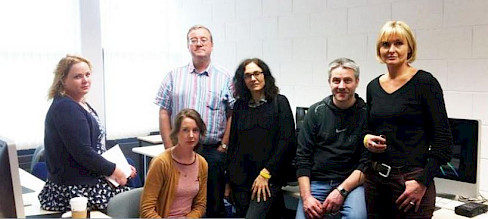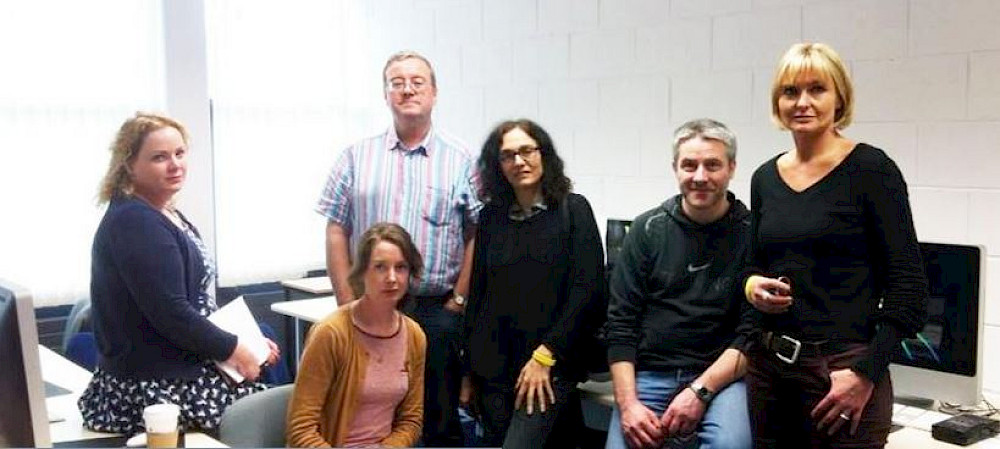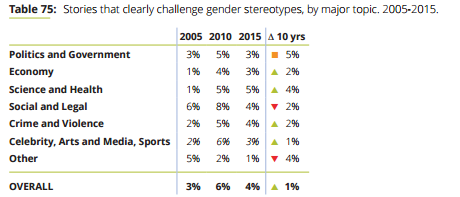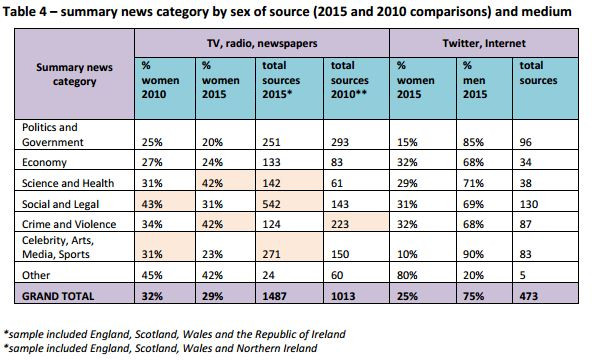On March 25th, teams of volunteers in more than 130 countries scrutinized gender equality in their national news media. Since 1995, the Global Media Monitoring Project (GMMP) has assessed national media in terms of the fair and balanced portrayal of women and men in the news. The 2015 results have now been launched as global and regional reports including a UK and Ireland report.
FuJo's Dr Debbie Ging is Ireland's GMMP National Coordinator and led the DCU team of coders including Aileen O'Driscoll, John Moran, Marie Boran, Niamh Kirk, Brenda McNally and Grace McDermott.
 L-R: Marie Boran, Aileen O'Driscoll, David O'Callaghan, Brenda McNally, Damien Hickey, & Dr Debbie Ging.
L-R: Marie Boran, Aileen O'Driscoll, David O'Callaghan, Brenda McNally, Damien Hickey, & Dr Debbie Ging.
2015 Global Key Findings:
- Although women make up about 50% of the general worldwide population, only 24% of the persons heard, read about or seen in news media are women.
- Only 37% of news media stories are reported by women.
- Female television presenters slightly outnumber their male colleagues. However, while younger presenters on screen are predominantly female, the scales tip dramatically at 50 years old when men begin to dominate the news-anchoring scene.
- Only 9% of stories evoke gender (in)equality issues and only 4% of stories clearly challenge gender stereotypes.
- Women report 5% more stories online than in the traditional mediums combined: 42% of news published online are reported by women but gender difference in source selection by female and male reporters becomes starker in online news.
Key Findings from the UK-Ireland Report:
Since 1995, there has been a slow but steady improvement in the visibility of women as producers and subjects of news in the UK and the Republic of Ireland. In the past five years, however, progress appears to have slowed down and, in some aspects, there is evidence of regression.
Regarding the overall presence of women as sources, only 28% of the 1960 sources coded were women. Women are significantly under-represented in hard news stories. Women remain largely confined to the sphere of the private, emotional and subjective, while men still dominate the sphere of the public, rational and objective.
Women’s visibility is highly differentiated in terms of subject type clustering around the categories of science/health (42%) and crime/violence (42%). There are also significant shifts in the frequency with which women appear across the range of stories. For example, in the social/legal and celebrity/arts categories, there has been a significant increase in the number of overall sources used in TV, radio and print but a reduction in the number of women who speak in those stories.
Findings show that there is an inverse relationship between sex and age, so as women’s age increases, so their incidence in the news decreases: 20% of sources/subjects who were coded as over the age of 50 are women. Women reporters were nearly twice as likely as men to write stories which had a central female focus (11% of all stories) and women were twice as likely to write stories which challenged gender stereotypes than men.
The Global Media Monitoring Project: The Global Media Monitoring Project (GMMP) has tracked coverage of gender portrayal and representation in the news every five years since 1995. It is the largest and longest longitudinal study on the gender in the world’s media. Participants range from grassroots community organizations to university students and researchers to media practitioners, all of whom participate on a voluntary basis. The GMMP is coordinated by the World Association for Christian Communication (WACC).
Subscribe to FuJo's Newsletter.







